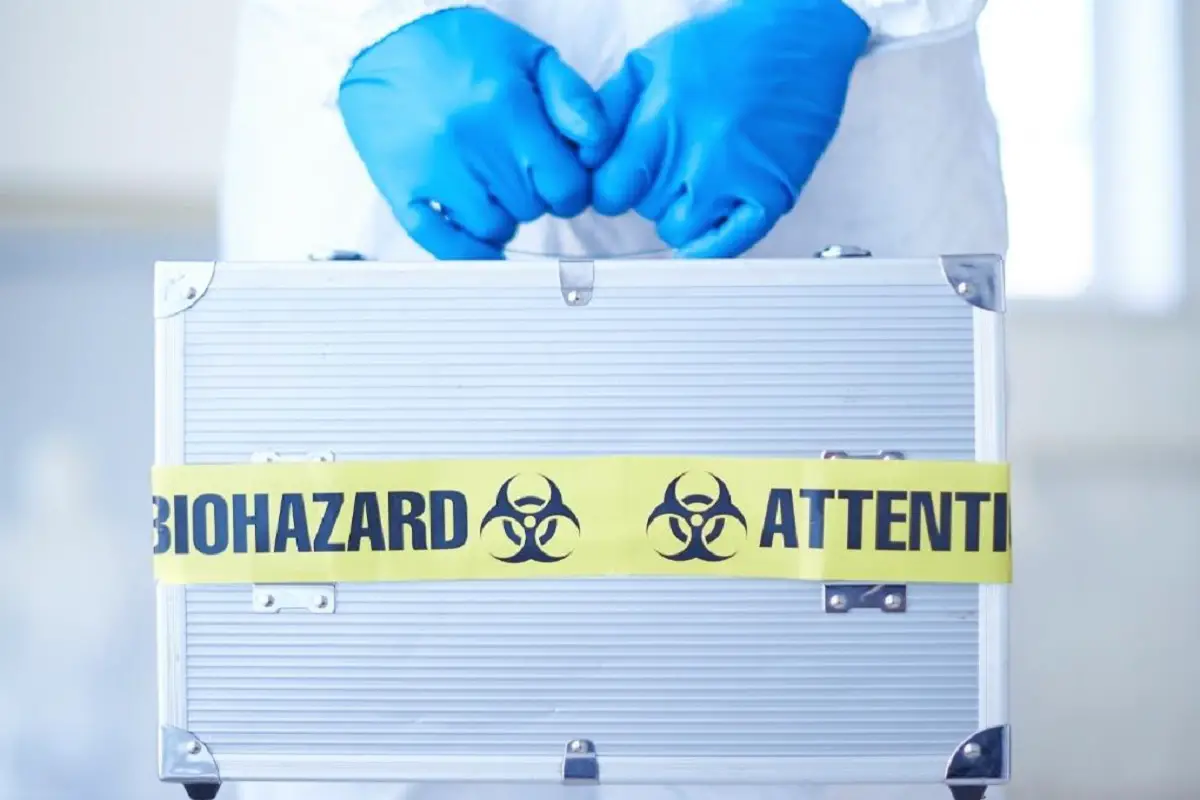Hazmat suits and biohazard suits both work to prevent the body from being harmed by biological or chemical dangers. But what are the differences between them? Find out below.
What Is a Biohazard Suit?
A biohazard suit is a specialized piece of clothing that is worn by individuals who are working in or around biological or hazardous materials. This type of suit is designed to protect the wearer from any potential biohazards, which can include biological agents, chemical toxins, and radioactive materials.
Donning and Removing a Biohazard Suit
A biohazard suit should be donned and removed in certain ways. This will likely require the assistance of another trained person. It is important to keep the latex gloves on (after they are cleaned thoroughly) until after the suit is removed, and then clean them and remove them. The suit and gloves should not touch any surface nearby that could leave residue or bacteria on them. At no time should the wearer or assistant touch the suit with bare skin.
Hazmat Suits Vs. Biohazard Suits
There are many different types of biohazard suits on the market, but they all share one common goal: to protect the wearer from any and all biological hazards. If they cannot, then they cannot be termed a biohazard suit.
Hazmat suits, on the other hand, are specifically designed to protect the wearer from chemical and nuclear hazards. They are not as effective at protecting against biological hazards as biohazard suits

However, hazmat suits and biohazard suits are in most cases the same garments. These terms are often interchangeable with each other.
Looking for a new HAZMAT suit? Check out our our Hazmat Suits Buying Guide for some great tips.
Similar to ordinary hazmat suits, biohazard suits are usually worn with additional components, such as a gas mask and visor, latex rubber gloves, and PVC rubber boots. It is important to seal off the body from any possible contact with biological threats.
Where Are Biohazard Suits Worn?
Biohazard suits are worn in the following places:
- Mold remediation in homes and offices
- Chemical waste areas
- Sewage treatment plants
- Plumbing and sewage repair
- Bio-research labs
- Asbestos removal
- Crime scenes
Biohazard workers need to maintain their hydration and take OSHA-regulated breaks so as to not overheat or become exhausted. Biohazard suits should be disposed of as biohazard medical waste in select city locations according to the state health department.
For more information, see our post How to Dispose of a Hazmat Suit.
When To Wear a Biohazard Suit
A biohazard suit should be worn in environments with biological hazards, such as:
- Bacteria
- Viruses
- Blood and bloodborn pathogens
- Urine
- Feces
- Vomit
- Infectious Disease (C.Diff, MRSA, Hepatitis, HIV, etc.)
Many pathogens are dangerous to both animals and humans, so it is important to keep pets away from these areas.
How Much Do Biohazard Suits Cost?
Biohazard suits are priced similar to hazmat suits and range in cost from $10 – over $1000 each. This depends on the level of the biohazard suit along with additional components included (SCBA, gloves, boots, etc.).
UP NEXT: What Can Damage a HAZMAT Suit?
To Close
Biohazard suits are very effective at keeping the wearer safe from biological hazards as long as they are worn and used properly. What is most important is to never expose the skin of the wearer to dangerous biological substances. Without these suits, certain industrial and commercial areas would be off-limits to human activity.

